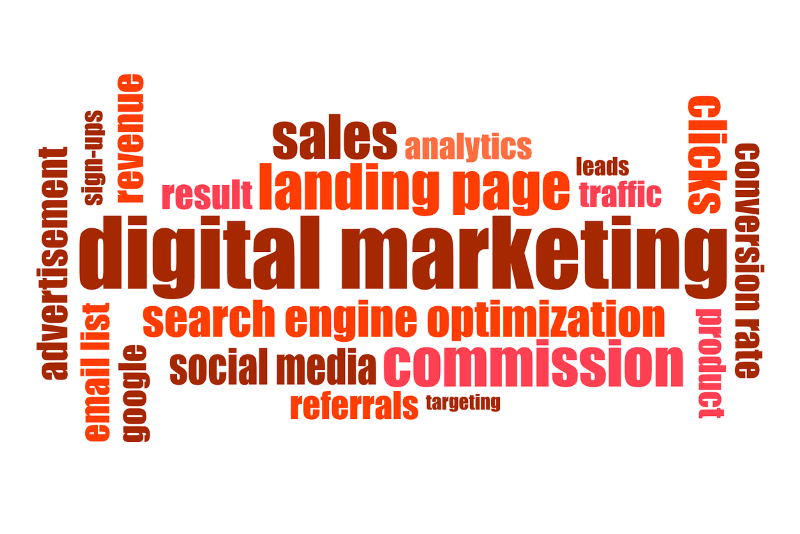Andrew Pitre of HubSpot makes an important point when he says, “Don’t think of your leads as leads.” There is a lot of noise in the digital world, and marketers need creativity to hit the right chord with the audience.
In a world flooded with over 11,000 monthly advertisements, bringing the human element is crucial for successful seo lead generation in digital marketing. Lead generation is essential for growing and expanding businesses. But, it can be a challenging affair.
Learn how to improve your lead generation process with five proven strategies for exponential results along with b2b lead generation examples and tools!
Contents
1. Website Optimization
First impression is the last impression regarding new businesses we want to associate with! Pay attention to the landing page if you run an ad campaign for lead generation. Where your audience lands after clicking on the ad can make or break your campaign.
The content on the website should be in sync with the advertisement. You can also introduce a chatbot or a lead bot on the website to automate the initial lead generation process and take over once the potential consumer is looped in!
Ensure that the website is easy to navigate for prospective customers and make it easy for them to fill out contact forms. You should add clear call-to-action buttons, optimize your landing page, and ensure the website is mobile-friendly.
It is essential to remain consistent with your messaging in the ad and website. You can also get creative with the call-to-action button to make it stand out. For example, instead of ‘Share your Email ID,’ you can say – “We promise we won’t spam you!”. You can create dedicated landing pages for different products or services. Lastly, you must ensure that your forms are optimized for conversions.
2. Strong Presence On Social Media
Social media has emerged as a great marketing tool in the past decade. It is an informal and visual medium where people are likelier to open up if you get your messaging right.
However, before you do that, you must build trust and credibility with potential consumers by sharing valuable content and engaging with your followers. Social media business suites also offer a deep dive into consumer metrics, making it easier for marketers to place focused ads.
You can target people from a particular geography, beliefs, tastes, age, and gender. It is more value for money due to such pointed targeting capability. If people trust your brand and you have managed to stay on the top of their minds, they are more likely to purchase.
You can use lead generation forms and gather more data on prospective customers. For example, many people are selling their online course, and as a lead magnet, they ask for your contact details in return for a free e-book or a discount coupon code. These are good marketing strategies because the consumer gets something in return just for connecting with the brand.
3. Emails Are Powerful
Email marketing, if done right, has the potential to change the game! Your job is half done if you can reach your audience and engage them on their email. If you are an apparel brand, you can do email series on styling and fabrics and help your customers know about the recent trends in the market.
Consistent newsletters and promotional emails keep potential customers interested in your brand, product, or service and encourage them to take action over an extended period. Reports suggest that people engaged in emails are more likely to recommend you further.
You can even segment your email list and send targeted campaigns to each segment. You can offer a lead magnet such as a free consultation or coupon and include a clear call-to-action in your emails to convert prospective customers into customers.
Recommended Read: Practical Guide to Email Marketing Metrics
4. Networking And Influencers
We all know the power of influencers in today’s time. If a footballer like Ronaldo talks about a fitness product, we tend to trust that product. If a fashionista talks about a brand being reliable, we trust them. We try the product if a cricketer talks about an energy drink.
Such is the power of influencers. Building trust among industry influencers can help spread the word and reach a new audience. When you network with influencers, you can access their followers and convert them into leads.
For example, many cosmetic brands offer influencers a new collection set to showcase their product on reels or stories. Even the unboxing videos are pretty popular. We have all seen stories of famous food bloggers visiting restaurants and rating them.
The word of influencers is worth more than it looks. It is time to get your head in the game and call some influencers!
5. Content Is Queen
Whatever you do; you will find content wherever you go. Whether whitepapers, e-books, webinars, websites, handbooks, or even an online course you offer your customers, it can help you generate leads.
Demonstrate your expertise and build trust with potential customers by offering valuable content. For example, you can create a whitepaper or e-book on a topic related to your industry and offer it as a lead magnet, host webinars on industry-related topics, and promote them on your website and social media channels.
Conclusion
Lead generation is one of the biggest challenges for any business today among all the options. And yet another hack, apart from all the mentioned above, is never to give up and stop testing.
You can always come up with new ideas which have not been tried before and test them out. Maybe it will work for your brand. Never shy away from taking a few business risks if the results can be beneficial. However, be mindful of where you put in your efforts and how you engage your prospective customers in today’s digital era! A lead generation agency can provide specialized lead generation marketing services to help you improve sales lead generation and personalize your lead generation strategies.

